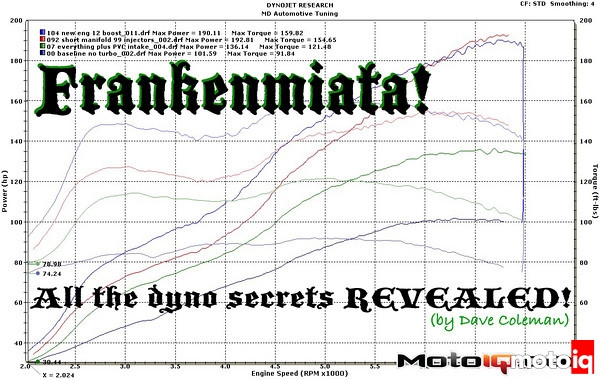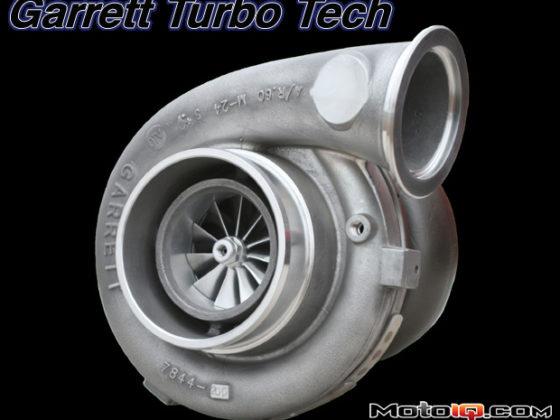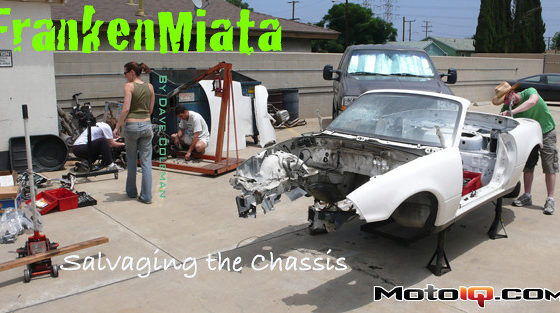,
Convinced we were making all the power we could possibly make with our scrap heap engine, we kept racing, blissfully unaware of how much power we were leaving on the table. It wasn’t until the 2009 Thunderhill Arsefreezapalooza that we were finally prodded into making another change. By this time it was becoming clear that our slowest drivers were also our shortest drivers.
Coincidence? Turns out no. They were also the ones complaining the loudest that they couldn’t see over the turbo. Especially on a hilly track like Thunderhill, apexes, brake markers, and sometimes whole cars could disappear behind the turbo. This has a way of slowing a driver down.

We originally mounted the turbo atop an adaptor pipe that bolted to the (inverted) stock exhaust manifold. This let us run a nearly-stock manifold, which made it easy to bring spare manifolds to the track with us. Since stock manifolds crack in normal usage, we were expecting our turbo to shatter the 20-year old manifolds in no time. After a year of that not happening, we were finally comfortable with the idea of making one-of-a-kind modifications to one of our manifolds.

Cutting the flange from our adaptor pipe and slicing off the stock manifold’s flange, we ended up with this situation. It looked daunting at first, but after using the flange to trace a line on the manifold a little cutting landed us here:

Much better! Where our original collector necked down to around 2″, then jumped up to 2.5″ for the adaptor before squeezing back down into the turbo, the new collector went straight from collector to turbo with none of that unnecessary nonsense.

The new mounting location was a full three inches lower, drastically improving visibility and driver confidence.

Before putting the new setup on the dyno, we also changed injectors. Again. As you’ll recall, one of our first changes was from 1.6 injectors to 1.8 injectors, to no effect. Still perplexed by our inability to run more than 4 psi, Jay had been racking his brain for an explanation. One of his leading theories, that one of our injectors had weak flow and was running one hole lean, turned out to be untestable when swapping for another crusty set of identical injectors resulted in nothing but fuel leaks, forcing us back to our original set.
Undaunted, Jay found a set of 1999 injectors that supposedy had a much better spray pattern than the 1996 injectors we were using. Same flow rate, but better pattern. So we slapped them in.
After finishing the new plumbing, the car went back on the dyno for a checkup. Most of our dyno time is actually just using the rollers to simulate race conditions and watch coolant and exhaust temperatures. We occasionally stop and make a power pull, but since the engine had been making the same power for so long, we generally didn’t waste time measuring our horses.
This time was no different. We went straight to our load test, which consists of pulling 5th gear to redline, pulling the engine down to 4000 rpm with the dyno brake, and then pulling back to redline again. We do this over and over again until exhaust temperatures stabilize, or we hear pinging, or someone gets hit by a connecting rod. EGTs stabilized somewhere safe (we just try to stay well south of 900 C), and we were satisfied. We nearly unstrapped from the dyno without measuring power. After all, we hadn’t really changed anything significant.
The engine did sound a little different, though. It sounded smoother, and those 4000-7000 rpm pulls seemed a little quicker than before. Just for fun, we did a power pull.

Dyno Chart #7: Sweet holy mother of Kojima, what the fuck just happened!?!
Completely out of the blue, we accidentally made 45 hp! Was it the new manifold making boost more efficiently with less backpressure? Was it the new injector spray pattern? We wanted to swap back to the old injectors just to see which it was, but we were tired, there was a race coming up, and we didn’t want to upset this new happy place the engine had just found. The science would have to wait for later (it never happened…)
Shortly after this dyno test, we dragged the car to a relatively small LeMons race in Phoenix, where we won by nearly 30 laps. The very next weekend, without even changing the oil, we won a 24-hour ChumpCar race at Streets of Willow by over 30 laps. A few weeks after that, surprising even ourselves, we managed to squeak out a third consecutive win at the hotly-contested LeMons race at Sears Point. In the span of a month, we became the first team ever to win LeMons twice, the first to win LeMons and Chump Car, and the first to win LeMons three times (all of those records have since been matched). Not bad for an accident.



